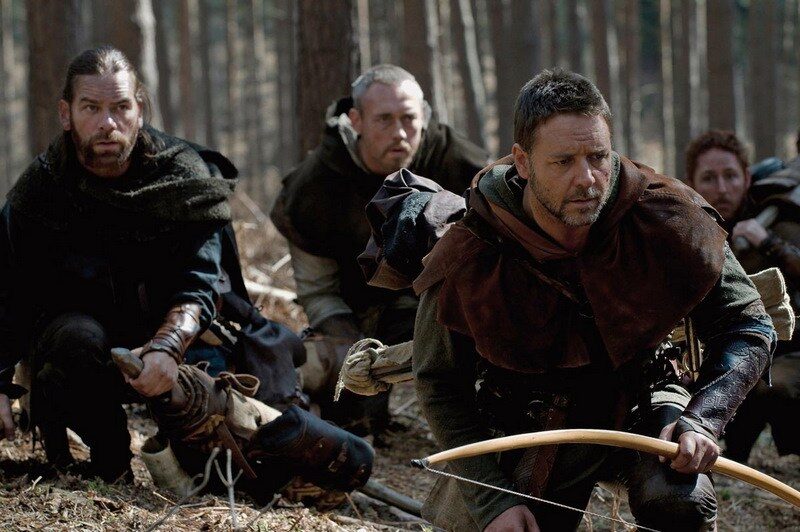How to Read Costume on Film | Clothes on Film – Part 20144

In this abridged version of a feature originally published in Moviescope magazine in December 2010, Clothes on Film take an overview look at how to ‘read’ costume design.
Costume design remains one of the most misunderstood and underappreciated filmmaking arts. Far in excess of merely ‘dressing’ an actor for their role, costume design is discourse. A film can be read via costume; sometimes overtly, sometimes subtextually. Not just conspicuous sci-fi or period, but contemporary stories set within a familiar world in familiar attire. On screen even the most rudimentary item of clothing can take on meaning.
2010 was a boundary crossing year for costume. Beyond the typical crop of historical dramas, fantasy and comic book adaptations, all of which are commonly accepted as highly visible and emblematic forms of sartorial expression; there were a considerable number of contemporary set films garnering attention for their costumes. Inception would be a prominent example. Although science fiction to a degree, the story exists within a recognisable world, with costume designer Jeffrey Kurland creating, literally from scratch, a stylish and functional template for differentiating character, even for interpreting plot.

There are subtleties within the film that allude to time, space and emotional make-up of the protagonists. Eames, the relaxed, travelled member of the group wearing tropical style splayed collars and a linen jacket; Cobb, dark and unsettled, his clothing loose and layered in a sombre colour scheme; Adriane, creative and young, a typical Paris student in a patterned silk neck scarf; Arthur, signature in a three piece suit, measured and fastidious. Minor characters too, such as Cobb’s mentor Miles, his Nehru collar shirt and tweed jacket suggesting the familiar look of the academic, while projecting a futuristic, even dreamlike air. That such a simple costume touch could imprint on the narrative is not too great a leap. Consider what Cobb’s children are wearing at the end of the story. On first glance this is the same as within his flashbacks, yet look again and their clothes reveal a different, potentially momentous truth.
Costume design need not be subtle. Particularly in science fiction, oftentimes clothing is used as visual iconography that speaks to the audience, though without breaking the fourth wall. When a world is unfamiliar or at the behest of its own rules and backstory, dress can ‘fill in the blanks’ as it were. Tron Legacy applies costume, specifically light and colour, as shorthand to establish factions within its near monochrome ‘Grid’. The story antagonists display yellow and red, loyal to master program CLU in orange. Those apathetic or against CLU wear white and blue, and during a brief though vital turning point a principal character changes their allegiance from red to white.

These are meticulously applied principles by director Joseph Kosinski and costume designers Michael Wilkinson and Christine Bieselin Clark. They cannot be broken for risk of undermining Tron’s fabricated reality. Moreover further rules apply in regards to the type of material worn inside the Grid; only latex-foam and Spandex, never organic fibres such as cotton jersey. Watch closely as the character Sam Flynn transfers from bio world to Grid; his sweater hood is casually blown inside the collar of his jacket, effectively hiding it from the audience and preserving the film’s costume laws.
Communication via costume can be employed to break the fourth wall, even if this device remains largely the preserve of avant-garde or antiplot films. Scott Pilgrim vs. the World, though intrinsically a comic book adaption, plays with many forms of narrative interpretation. The ‘seven evil exes’, Scott’s conflict throughout the story, all bear a hidden number to denote their position within the villains’ hierarchy. An obvious example is Lucas Lee, ex number two, with two ‘Xs’ embossed on his belt. This is a message for the audience. Just another way that costume can enrich our viewing experience by reaching out and gently tapping us on the shoulder.

Of course there is a more traditional role for costume, in that clothes worn encompass an entire genre. The ‘costume film’ is saddled with the responsibility of satisfying an audience based purely on the protagonists appearing historically accurate and/or alluring. Yet the costume film does not exist. There are period dramas, comedies and love stories, but costume enhances not defines their narrative. Period costume is alive with symbolism; the covering and exposing of flesh, layers of undergarments, sheer fabrics and the rebelliousness of flouting the rigid formalities of dress code.
Robin Hood was one of the more interesting period films last year. As a biopic it strived for realism while retaining the basic costume profile of its folk hero, i.e. a late medieval, typically short tunic, though no woodsman hat and feather. Director Ridley Scott and costume designer Janty Yates applied their craft within an interpreted rather than exaggerated reality. Clothes worn during this period were simple and class dependent, either for display or climate.

Accuracy is not only important in period productions. The Social Network, set within a historical framework though not ‘period’ in the customary sense, featured detailed recreations of outfits worn by the story’s real life protagonist Mark Zuckerberg. Most fascinating is a rudimentary Gap sweater that was actually remade by costume designer Jacqueline West so that the logo could be read the correct way round in a reflection. Even a sweater is never just a sweater on film; it is a powerful creative tool. Interpretable and evocative; costume has stories to tell and secrets to spill.
The full version of this article by Clothes on Film editor Chris Laverty was published in Moviescope magazine, issue 20.
You can watch movies online including The Social Network at LOVEFiLM.com.
© 2011 – 2018, Lord Christopher Laverty.